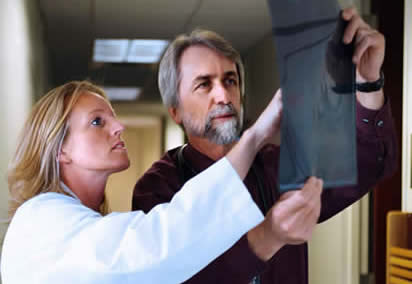Curriculum
 Less time in the classroom.
Less time in the classroom.
More hands-on application.
Better acquisition of knowledge.
The goal of our medical education program is to produce expert physicians. We utilize a Problem-Focused, Application-Oriented Curriculum (PAC) based upon principles and methods from the learning sciences. The principles include adherence to Benjamin Bloom’s taxonomy of learning. Bloom’s key insight was that knowledge-based competencies develop in a logical, progressive manner, and it is the latter stages of being able to work with information that characterizes the deep knowledge of expertise. The PAC focuses on the first three stages of Bloom’s taxonomy, in which Bloom characterizes information as being:
Acquired  Comprehended
Comprehended  Applied
Applied
It’s the ability to apply knowledge that characterizes rudimentary competence; a requisite developmental stage on the road to the competence of expertise. Restructuring of knowledge to make it more accessible and useful occurs with comprehension and application of information. Given that students are naïve to so much of the material they must acquire in the first two years of medical school, how is it possible in the PAC to have adequate time for meaningful comprehension and application of that information? The approach taken by the PAC is that information should be acquired outside of the classroom by self-study of faculty-assigned readings, and that the classroom should only be reserved for comprehension and application sessions.
As compared to students produced by other curricula, these students have rudimentary competence in the domain of medical knowledge. We see proof of this accomplishment objectively (superior National Licensing Board scores) as well as anecdotally.
Are you ready for the TCOM challenge?

Social media